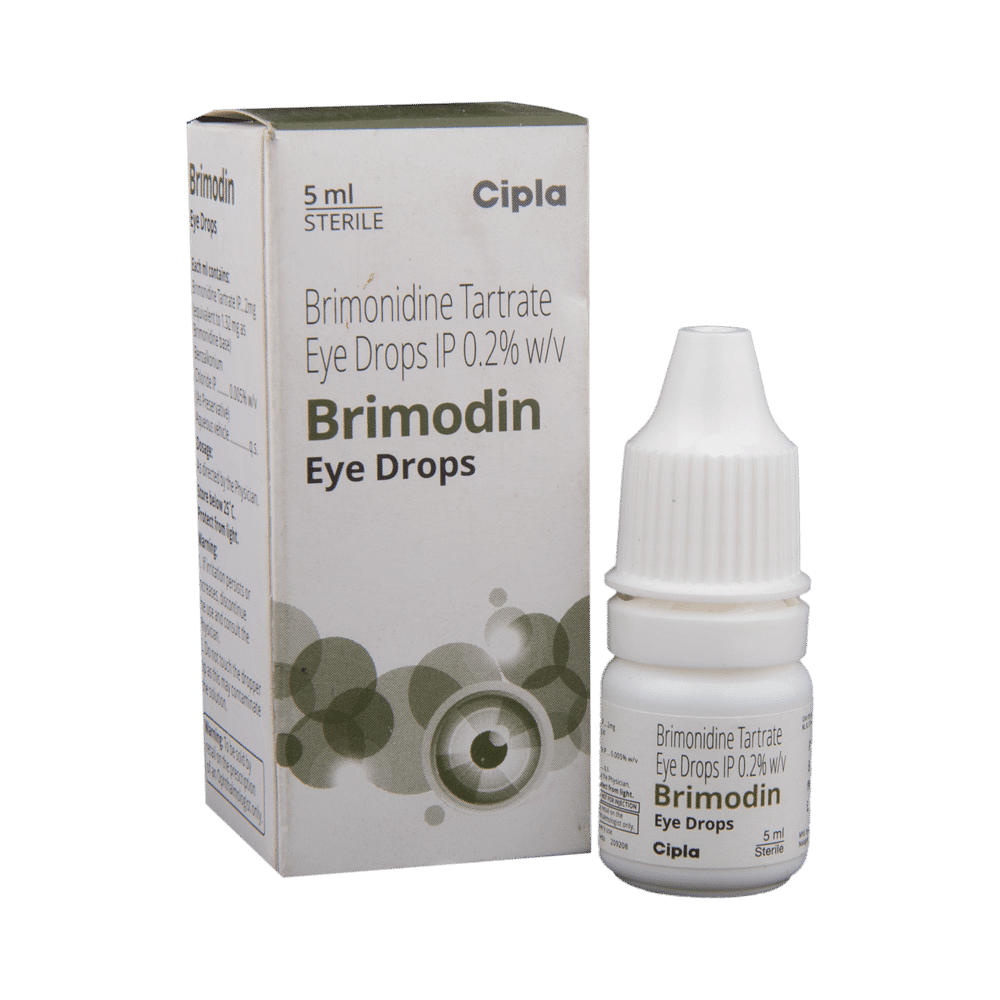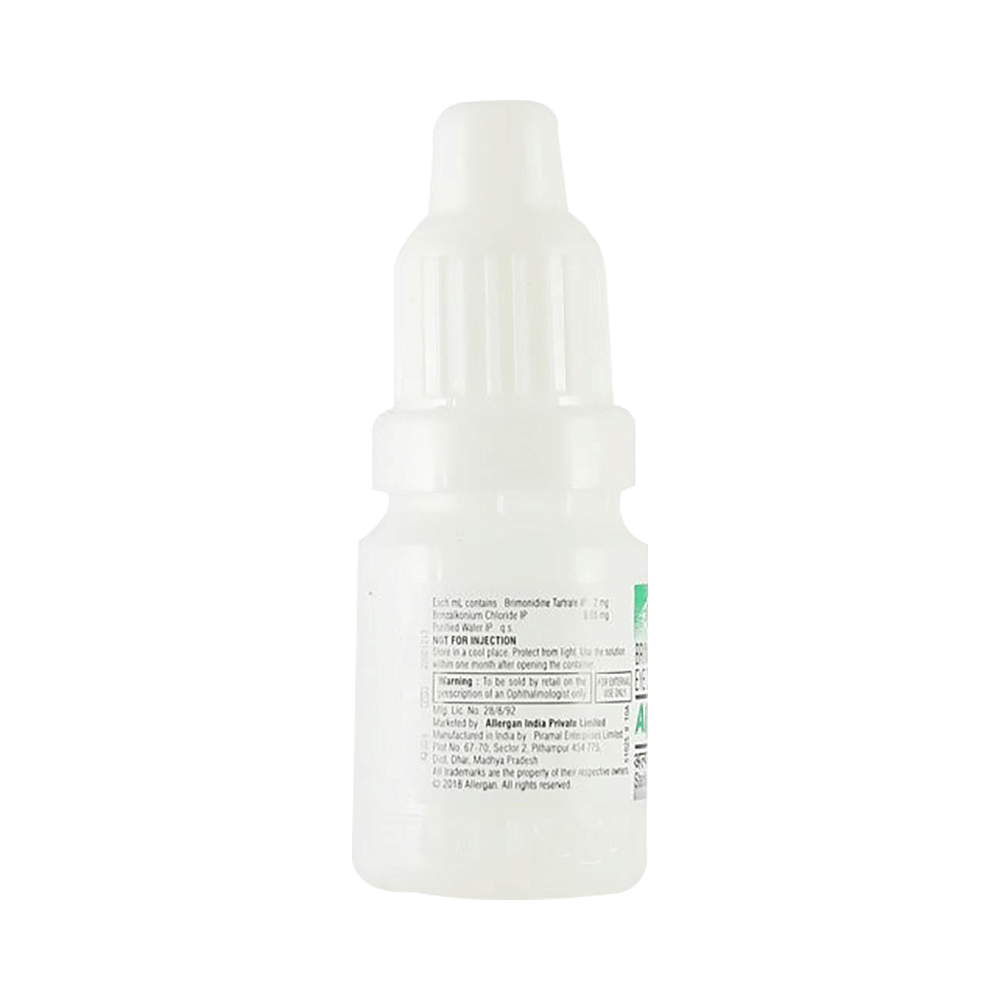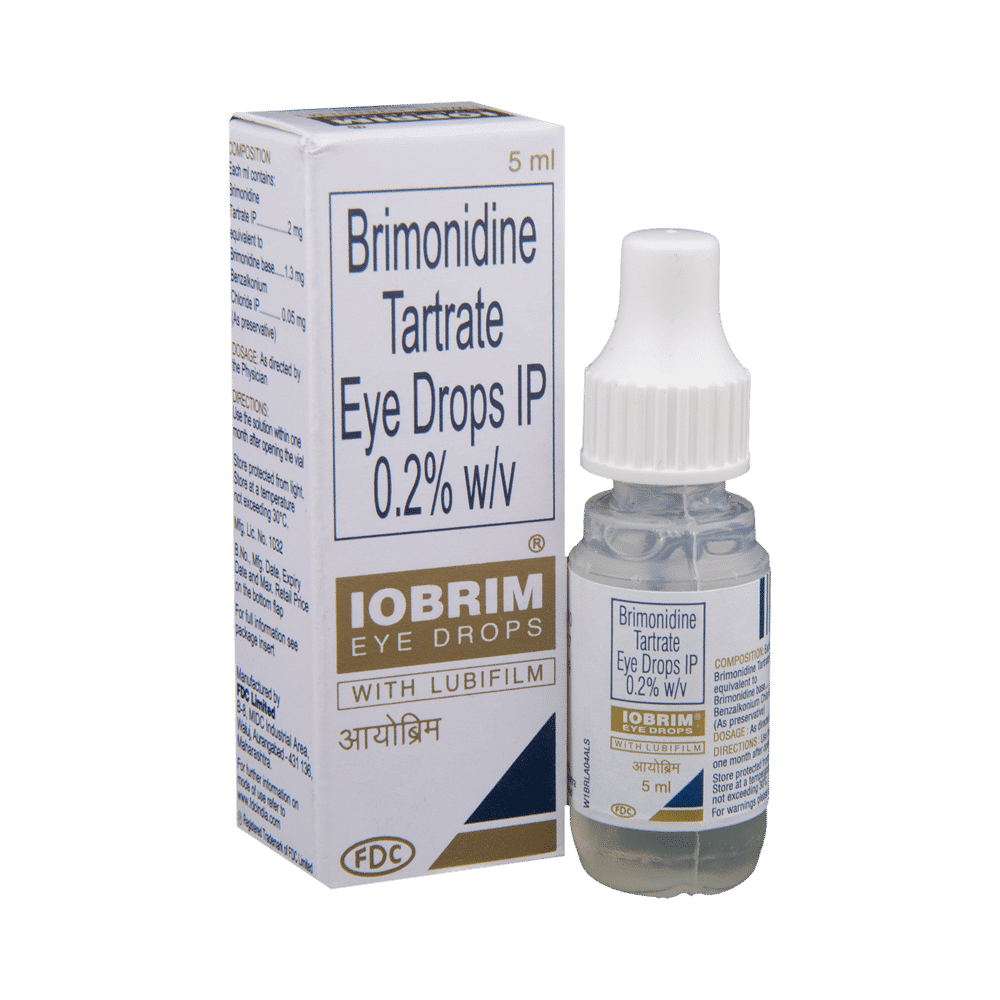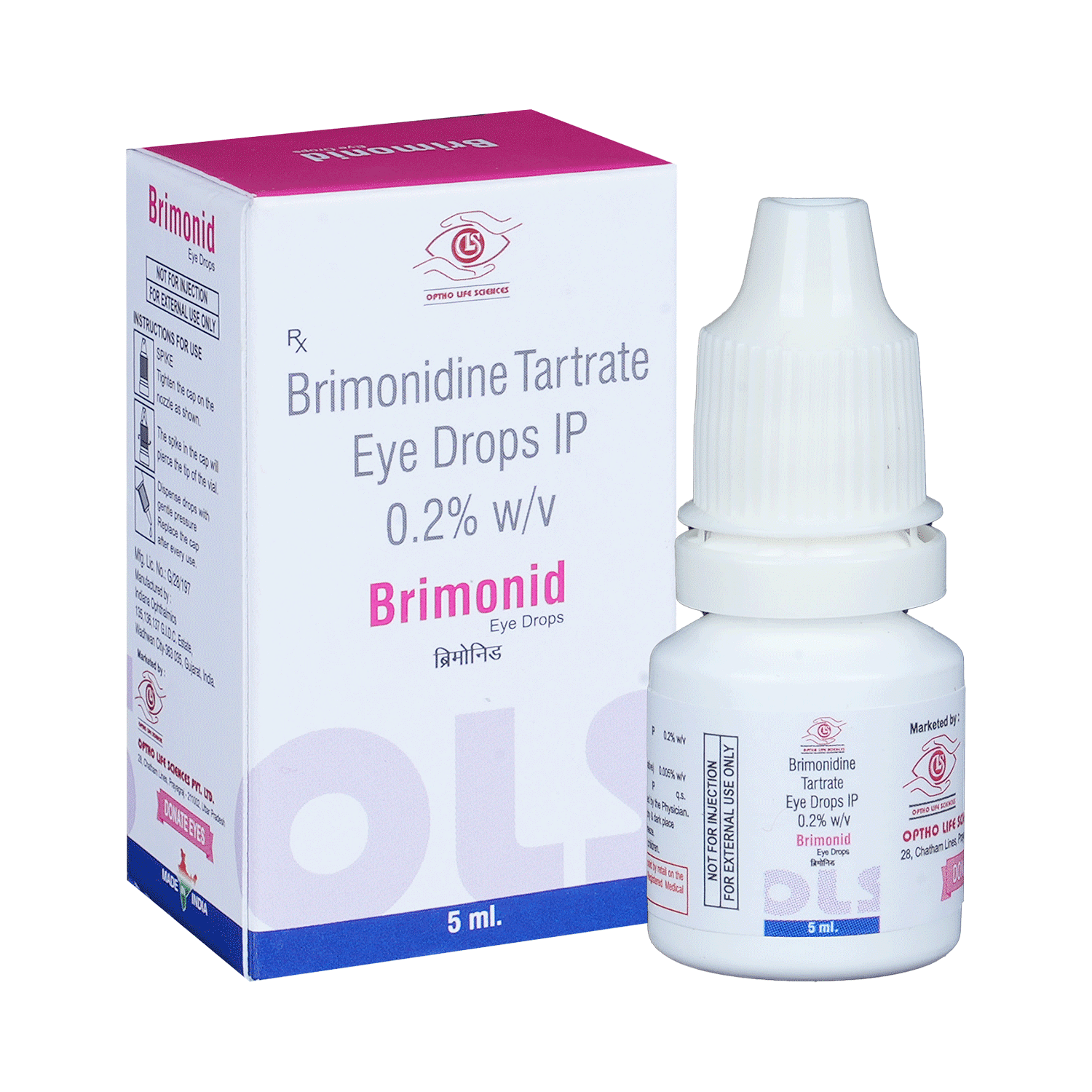
Brimed 0.2% Eye Drop
Manufacturer
Raymed Pharmaceuticals Ltd
Salt Composition
Brimonidine (0.2% w/v)
Key Information
Short Description
Brimed 0.2% Eye Drop is used in the treatment of ocular hypertension (pressure in the eye) and glaucoma.
Dosage Form
Eye Drop
Introduction
Brimed 0.2% Eye Drop is for external use only. Use it in the dose and duration as advised by the doctor. If you wear contact lenses, remove them before using the medication. Avoid touching the tip of the dropper to any surface as it may contaminate the eye drop. For best results, use it daily in the evening or at night.
Directions for Use
This medicine is for external use only. Use it in the dose and duration as advised by your doctor. Check the label for directions before use. Hold the dropper close to the eye without touching it. Gently squeeze the dropper and place the medicine inside the lower eyelid. Wipe off the extra liquid.
Safety Information
Side Effects
allergic conjunctivitis burning sensation conjunctival inflammation conjunctival hyperemia eye itching high blood pressure allergic reaction in the eyes dry mouth visual disturbance
Breastfeeding Warning
Brimed 0.2% Eye Drop is probably safe to use during breastfeeding. Limited human data suggests that the drug does not represent any significant risk to the baby. To reduce the amount of Brimed 0.2% Eye Drop that reaches the breastmilk, place pressure over the corner of the eye for 1 minute or more, then remove the excess solution with an absorbent tissue.
Pregnancy Warning
Brimed 0.2% Eye Drop is generally considered safe to use during pregnancy. Animal studies have shown low or no adverse effects to the developing baby; however, there are limited human studies.
How it works
Brimed 0.2% Eye Drop is a sympathomimetic. It works by decreasing the production of aqueous humour (fluid in the eye) thereby lowering the increased eye pressure.
Quick Tips
Brimed 0.2% Eye Drop helps lower high pressure in the eye and reduces the risk of vision loss. For best results, use it daily in the evening or at night. Remove contact lenses before using Brimed 0.2% Eye Drop and allow at least 15 minutes before re-inserting them. Do not touch the tip of the dropper to any surface or to your eye to avoid contaminating the eye drops. Wait for at least 5-10 minutes before delivering the next medication in the same eye to avoid dilution. It may cause short term blurring of vision when first used. Use caution before driving or using machines. It may cause temporary burning or itching sensation in the eye. Inform your doctor if this does not go away. Make sure to use within 4 weeks of opening the bottle.
Related Medicines

Brimodin Eye Drop

Alphagan Eye Drop

Iobrim Eye Drop

Brimoron 0.2% Eye Drop

Brimonid Eye Drop

Glaucom Eye Drop

Iysetra Eye Drop

Brimopress Eye Drop

Brimonist Eye Drop

Brintod 0.2% Eye Drop
Frequently asked questions
Is Brimed 0.2% Eye Drop a beta blocker?
No, Brimed 0.2% Eye Drop is not a beta blocker. It is an alpha adrenergic agonist that acts on alpha adrenergic receptors in the eye, reducing high eye pressure by decreasing the amount of fluid in the eyes. It has minimal effect on the heart and lungs.
Do Brimed 0.2% Eye Drop make you sleepy?
Yes, Brimed 0.2% Eye Drop may cause drowsiness and fatigue, which may impair your ability to drive or use machinery. It may also cause blurred or abnormal vision, which could make it difficult to drive or use machinery, especially at night or in reduced lighting. Avoid driving or using machinery until these symptoms have subsided.
Does Brimed 0.2% Eye Drop lower blood pressure?
Brimed 0.2% Eye Drop may cause low or high blood pressure. Before taking this medication, inform your doctor if you are already taking any medicines to lower blood pressure. Regularly monitor your blood pressure while taking Brimed 0.2% Eye Drop.
Does Brimed 0.2% Eye Drop cause pupil dilation?
No, Brimed 0.2% Eye Drop does not cause pupil dilation. In rare cases, it may cause pupil constriction (miiosis), which can lead to night vision difficulties, halos, and glare. If you experience these symptoms, consult your doctor.


